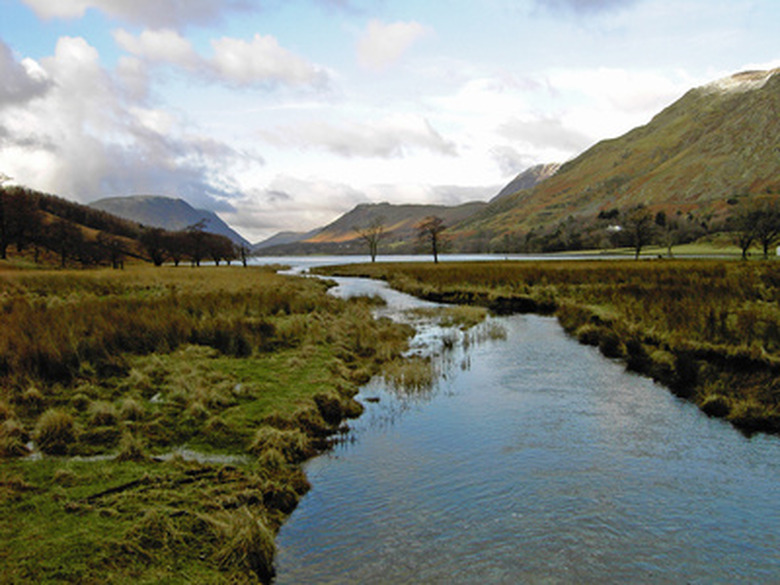Why Is Water So Important To Life On Earth?
Every living organism on the face of the Earth relies on water for survival, from the smallest microorganism to the largest mammal, according to the National Aeronautics and Space Administration (NASA). Some organisms are made up of 95 percent water, and almost all organisms are made of at least 50 percent water, according to National Geographic for Kids.
Considerations
Considerations
Water molecules have two unique properties, according to NASA. Water remains in its liquid state over a large range of temperatures and has a lower density in its frozen state. Most molecules have a higher density in their solid state compared to their liquid state.
This causes ice to float on top of water because water is more dense is the solid form than the liquid form. If ice was denser than water, the evolution of life would have been impossible. This is because ice formed on oceans would sink to the bottom of the ocean and push the already cold water back to the surface. Eventually this positive feedback cycle would continue until all the water on Earth was frozen.
Function
Function
Perhaps the most important role that water plays when it comes to life on Earth is in aerobic respiration. Aerobic respiration is used to create energy for life processes in the form of ATP, according to the International Society for Complexity Information and Design. The majority of organisms on Earth use aerobic respiration as an energy source. Without water aerobic respiration could not take place. Photosynthesis could also not take place without the presence of water, according to Maricopa University.
Benefits
Benefits
Water is a molecule that has multiple uses and is a perfect solution for dissolving nutrients and transporting molecules, according to NASA.
In humans water is a lubricant for joints and maintains healthy mucus membranes in the mouth, lungs, nose, and intestines. Water also helps prevent constipation in animals, according to the University of Texas Extension Program.
Insight
Insight
Not all scientists believe that the presence of liquid water is a sure indicator of life, according to NASA. However, the presence of liquid water on a planet certainly increases the chance for life.
Misconceptions
Misconceptions
Liquid ice is actually present on multiple planets and moons, according to NASA. However, ice does not make life possible; water in its liquid form is necessary for life to exist. Ice on other planets is not always water but sometimes frozen gases from other types of molecules.
Cite This Article
MLA
Girard, Laurence. "Why Is Water So Important To Life On Earth?" sciencing.com, https://www.sciencing.com/about-6384365-water-important-life-earth-/. 7 August 2017.
APA
Girard, Laurence. (2017, August 7). Why Is Water So Important To Life On Earth?. sciencing.com. Retrieved from https://www.sciencing.com/about-6384365-water-important-life-earth-/
Chicago
Girard, Laurence. Why Is Water So Important To Life On Earth? last modified August 30, 2022. https://www.sciencing.com/about-6384365-water-important-life-earth-/
